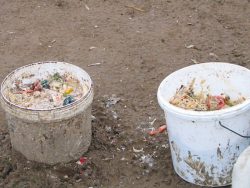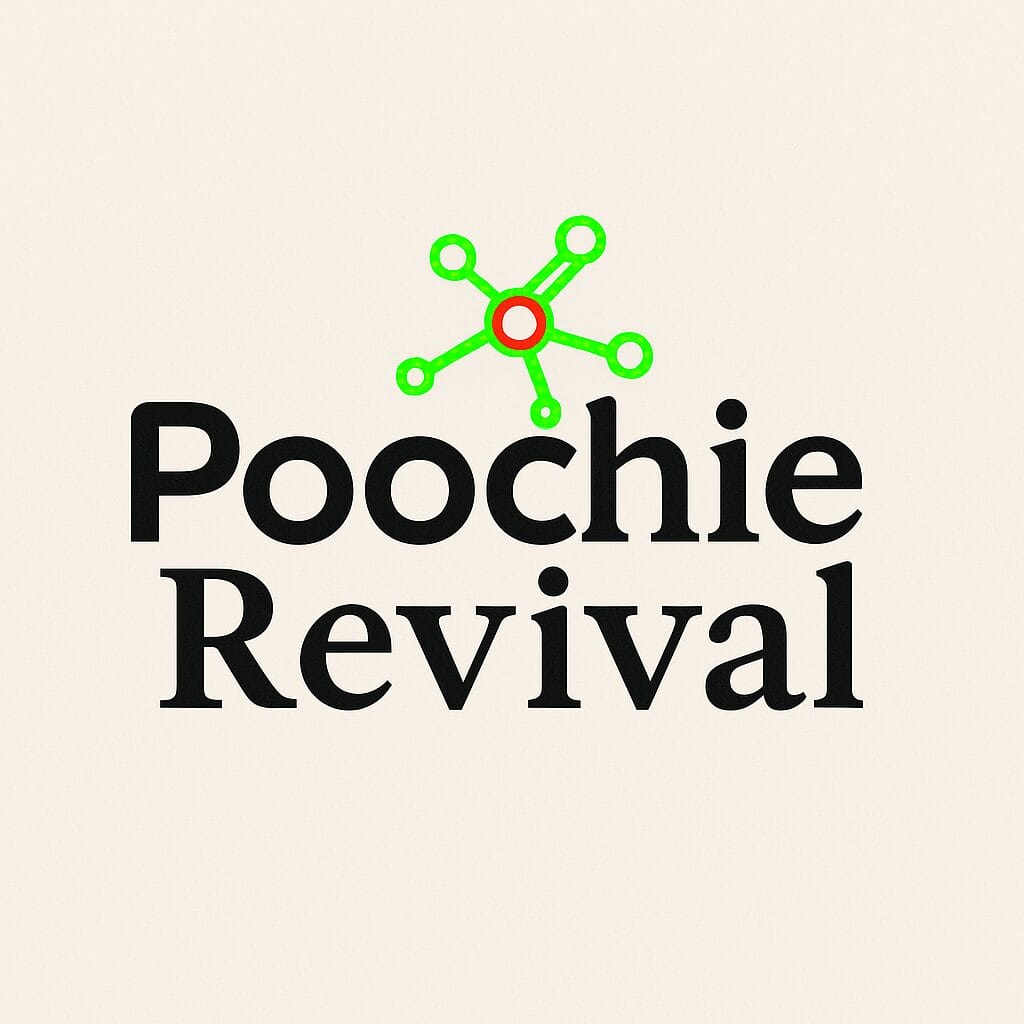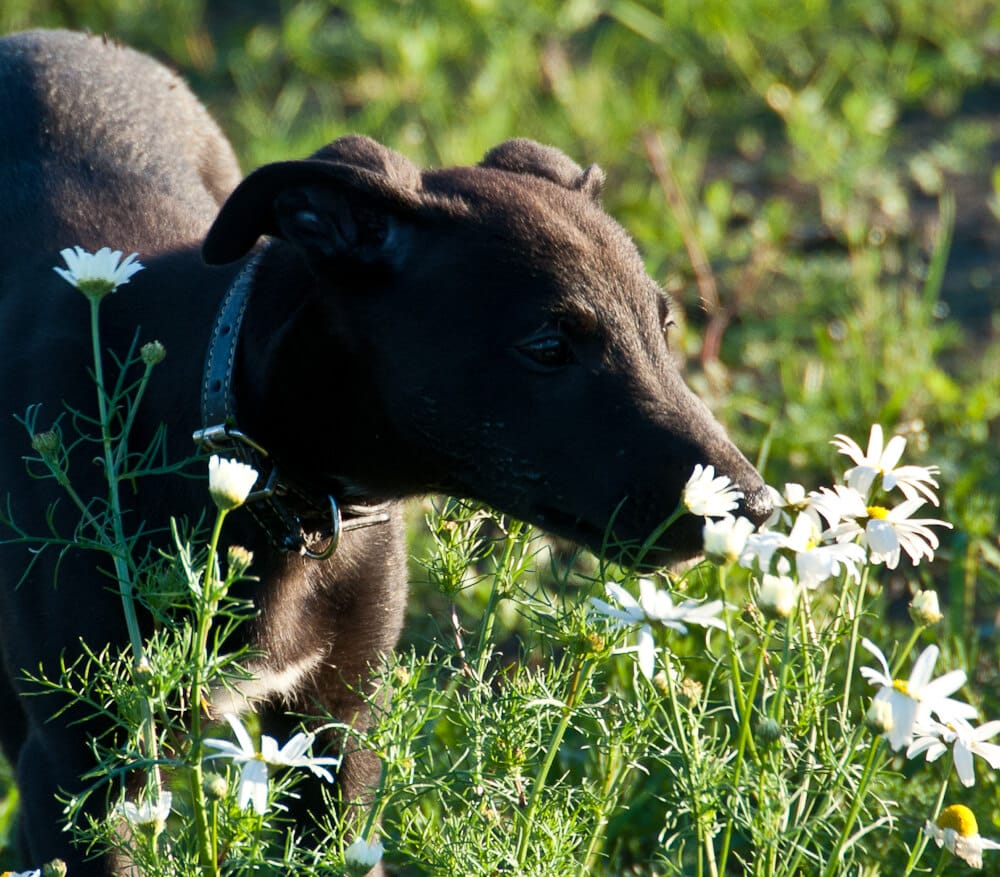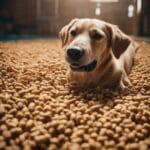Once upon a time, a peculiar concept known as holism appeared in dry foods. Holistic is a beautiful idea. It means a whole where the combined effect of the parts is greater than their sum. In other words, 1+1=3. This system is also called synergy, which is the same thing said differently: a cumulative combined effect. In dog foods, it means that the ingredients together do much more than they would separately.
Does it sound amazing? Exactly, it sounds amazing, and that’s where it ends. But the idea is old and has been implemented. If a raw feeder mixes approximately 50% beef, 30% chicken, 10% heart, and 10% fish, you get an amino acid composition that supports the body’s function more effectively than any of the meats given alone. When nettle and rosehip are given together, a holistic synergy benefit is also achieved, as the vitamin C in rosehip enables the absorption of iron from nettle.
Whether any real benefit is gained from these tricks is another matter. Namely, if a dog’s iron intake requires nettle and rosehip, then the feeding is already flawed, and the focus is on something other than the dog, its food, and nutrition.
Still, the most well-known synergy benefit comes from something that is not often considered. It benefits the immune system when zinc and vitamin D are given.
Action, not the name

Holism is not inherently bad or meaningless. It becomes one or the other depending on what is claimed to provide synergy as holism (a deliberate tautology, as it says that the thing gives itself).
If holism is sought by replacing calcium powder with fish bones, then it’s on the useful axis, at least in principle. It quickly becomes harmful when amounts are calculated and what those amounts do to the overall feeding. However, a mix that includes some calcium powder and some fish waste is a completely sensible solution.
Sensibility does not mean the same as ease or affordability. If feeding a dog requires four different meats and two calcium sources per day, it cannot be implemented with a larger pack. We fed growing dogs in Ireland with leftovers from Chinese restaurants. Chicken, fish, pork, beef, vegetable oil, cooked vegetables… Outwardly a terrible mess, but it worked like a charm. The reason was that it contained almost everything. It provided holism as food with zero effort (and as a free product that was immediately ready to give, economic synergy).
It should be noted that giving meat, bones, and organs with a few mandatory additions is not holism. It is basic feeding that must meet the dog’s basic nutrition.
In dry foods, holism does not mean using multiple types of meat that complement each other’s deficiencies. That would be too revolutionary an idea. In dry foods, holism means using ingredients that I have always called weeds mowed from the factory wall: herbs, berries, and plant parts.
For them to work as holistic or even useful food, they must do something alone and then even more together. They don’t do that, either. Holism in itself means nothing. It is more of a philosophical term, and to turn it into practice, one should be able to explain and also prove what advantages are gained. In dry foods, this is never done, and the reason is clear. The advantages cannot be explained because they do not exist.
It’s about marketing. Promise something vague, and if that vagueness comes from herbs, all the better. Everyone knows that the Chinese ate herbs and Lapland shamans. Herbs must then be healthy, and everything healthy is beneficial. The fact that the Chinese have always been a sick nation (holistically) does not matter. Nor does it matter that shamans were addicts who communicated with gods high on herbs.
For the same reason, herbs are usually listed as fresh in the product description. Freshness is good. Even the fish in dry food is fresh. That’s good too, because no one wants to buy a few days old farmed salmon for themselves (except that they do, a lot, because it’s cheap). Then the basic fact explained several times is forgotten. There can’t be anything fresh in dry food because it is a dry product with a very long shelf life.
Has anyone heard of crispbread being sold as fresh bread? But that’s exactly what dry food manufacturers claim. And the pet store cashier when selling.
Acana Classic Red
Acana and Orijen are known for their grand marketing claims, which have a very distant connection to reality. Or perhaps reality does not exist. A freely grazing sheep or a fish swimming freely in the Atlantic are such self-evident things that sell images and give headaches.
Let’s turn it around. Firstly, sheep always graze freely. However, sheep are an environmental problem and cause significant erosion and vegetation impoverishment. It’s not quite an environmental crime like palm oil, but herds of thousands of sheep are not far behind. Free fish mean reckless overfishing, which is causing the oceans to become deserted. Do Acana and Orijen still sound like attractive options?
I understand that people do not know how to read advertising claims because they do not know what they contain and what they mean for the final product. But still, some alarm bell should ring when food advertises following the whole prey principle – that is, offering the entire prey animal. A thought familiar to cat owners through feeding mice, but on the dog side, it’s a throwback to the barf era’s deception. At that time, they tried to claim that the poorest slaughter waste represented the wolves’ diet based on prey animals.
Whole prey genuinely means using what comes from the slaughterhouse. In Finland, Mush implements the same idea because it is owned by Snellman and can be accurately described as Snellman’s meat company’s slaughter waste line. There’s nothing inherently wrong with it, and surplus and leakage should be utilized. But when it becomes the main product due to the principal or other compulsion, then we’ve quickly moved from benefit to harm.
Of course, other slaughterhouses supply entirely similar stuff. The point is that other operators can choose what they buy and from where.
Whole prey does not mean a whole animal. That would be funny because it’s a by-product of human food production. Of course, production also includes transport-damaged, leg-broken, skin-diseased, and all sorts of things that cannot be used for human food. But they come very little relative to total production, and Champion Petfoods’ production is certainly not built on them.
No synthetic additives are needed! And it continues. Thanks to the Whole Prey composition, the food contains only 5 additives (vitamin E and B5, zinc, choline, and copper). Acana’s typical customer is now wiping sweat from their forehead. It was good that they didn’t accidentally poison their dog when they almost bought another brand. Everyone knows that synthetic means at least useless and at worst dangerous. When the danger is avoided, they can take the synthetic vitamin D themselves, which is not offered to the dog, not even in food.
No one, however, asks why pantothenic acid, or vitamin B5, needs to be added. It’s supposed to come from those holistic plants and that cut oats (cutting with a blade is based on a completely pointless debate in the horse and utility animal sector about which is better, cutting or flattening). Why does choline need to be added, as there is naturally plenty of it in meat – or did it happen that there was little whole prey meat after all? Or why is copper on the list, as there must be enough liver to satisfy vitamin A, and then copper is also obtained. The sales claim was: The meats, organs, and edible cartilage in the food provide these essential nutrients to the dog in their natural form.
Copper must be added because there are not enough organs, and the dog’s vitamin A is calculated through the RAE value, including all carotenoids like beta-carotene, and copper is not obtained from them.
In plain language: the supplements that had to be added indicate that the food genuinely does not contain what is claimed in the amounts that are implied. Then it’s time to wake up and ask how it truly is with the other nutrients. We are deep in the problem of meaty bones in dry food.
The worst part is that Acana is lying. According to the product description, they have added glucosamine and chondroitin sulfate. What else have they added that has been forgotten from the ingredient list?
Acana boasts low carbohydrates. There are beginner-level instructions on how to calculate carbohydrate amounts in dry food, so now would be a good time to practice.
I spoil the result: Acana has 30% carbohydrates. Now we must remember the basic fact that the sum of all parts must be 100. Since all foods have roughly the same amount of minerals, fiber, and water, the only thing that changes the amount of carbohydrate is the total amount of proteins and fats. In all foods where the sum of proteins and fats is 46, there are as many carbohydrates as in Acana. In every 30/20 type of energy food, there are fewer carbohydrates than in Acana.
The question mark comes from the analysis technique. Carbohydrates are not analyzed, and therefore they are not reported in foods. It’s done with the same subtraction in the laboratory. But there, the amount of protein is not analyzed either, but the amount of nitrogen in the food is measured, and then it is converted into protein amount with a simple multiplication. If nitrogen comes solely from proteins, the calculation gives an almost correct result. If nitrogen comes from elsewhere, the protein appears higher than it truly is. Acana has quite a few food items that may have nitrogen but not a corresponding amount of proteins.
That means Acana very likely has a lower actual protein than stated. That, in turn, means the amount of carbohydrates is higher than calculated.
However, it doesn’t matter at all. Carbohydrates are not the problem. The problem is the high-protein gimmick, which is useless in those amounts and which must be wasted through the kidneys into urine. The dog might dry out a bit. Again, it comes down to only the quality and quantity of the main ingredients matter.
Acana’s Ingredients
I use Acana as an example because it is a kind of market leader in foods with a mile-long ingredient list, highly holistic claims, and Orijen’s orchestrated idea of offering active protein amounts with maintenance energy. The same things apply to all its competitors.
Acana Classic Red is a 29/17 dry food. It has an enormously long ingredient list, of which the only essential things are these:
- Dried lamb (23%), cut oats (22%)
Everything else is a miscellaneous congregation that has no significance as food for the dog’s body. Those two do.
Angus beef sounds fancier than it is, but when it is only 5 percent as fresh weight in the ingredients, it doesn’t matter. The same goes for pork. Each of them is at most half a teaspoon in 100 grams. I bet a bottle of good whiskey that those pitifully small amounts are included only because they can get slaughter waste cheaply from the local area. Their sole purpose is to reduce the share of lamb as the main ingredient because lamb is expensive.
But when all the meats are added together, the meat-based content in the food is at most 30 percent, which is the same for everyone. Acana didn’t get a marketing advantage from the amount of meat because it’s entirely ordinary. The only unusual thing is the way the bag’s contents are composed.
If we consider the whole prey principle, how is it realized when a large amount of lamb meal is mixed with a minuscule amount of slaughter waste? The point is that it isn’t. Anything can be called whole prey because it means nothing, and its meaning and use are not regulated. Empty words.
Deception with the Product Description
An ancient marketing trick has been to make the product description as long as possible. It originally started with products intended for people. Of course, the ingredient list can be manipulated to make 23 percent meat meal first, while the remaining 77 percent is broken down into small parts. The real reason, however, is not that.
In reality, this is done because the longer the list, the more impossible it becomes to read and especially understand. It’s a smokescreen that hides the real thing. The same principle as making terms of use as long and complicated as possible so that no one reads or even knows what they’re agreeing to.
Product descriptions must be made in order of magnitude. The first one is the most abundant. That gives a handy tool to evaluate a bit where things stand.
fresh Angus beef (5%), fresh Yorkshire pork (5%), lamb fat (5%), whole red lentils, whole green peas, whole green lentils, raw free-range lamb (4%), whole grain oats, fresh beef liver (2%), dried pork (2%), herring oil (2%), fresh pork liver (2%), whole chickpeas, whole yellow peas, sun-dried alfalfa, lentil fiber, fresh beef tripe (1%)
Freshness in a dry and preserved long-shelf-life product is, of course, a selling point, but that’s not why they’re used. The fresh portion of some amount (no one even knows what these percentages are from, but they are not from the bag’s contents) is to make the amount larger and adjust the placement on the ingredient list.
If beef and pork were reported as dry, as they should be considering the product, they would fall to the bottom of the list, and someone might realize how little there is. And that would eat into sales. At the same time, someone might get a slightly better idea of how big a share the pea-like foods have. Their problem is twofold.
Firstly, note that they are not reported as fresh. Secondly, peas, beans, and lentils have a reasonably high protein content. When meat simply cannot achieve 29 percent total protein with those amounts, it’s impossible, so it’s boosted with peas – otherwise, even Lupassa would have almost 30 percent protein.
We are in a funny situation. The food is advertised as whole prey food, and then it has to be rigged with waste that even vegans wouldn’t use. Peas, beans, and lentils don’t come from the field into a carnivore’s food bag but as waste from human food production. Most of the useful part, like the protein, has been utilized elsewhere.
And now we’re in the analysis problem. Peas, beans, and lentils contain nitrogen, which is not in proteins but appears in analysis as protein. The same could be obtained from whole clover. Organic production uses nitrogen-fixing plants in crop rotation to reduce the use of nitrogen fertilizers. It’s interesting in itself, but we’re very far from a carnivore.
But that’s also irrelevant. The point is that the amino acid composition of pea proteins is wrong for dogs. It’s close to useless. This is something that is regularly overlooked from the roadside and loudly in people’s pulled oats and meat substitutes – focusing on the amount of proteins, not their quality for the eater.
If a wolf doesn’t graze in a wheat field, it also doesn’t snack in a clover or pea field – except when hunting deer and roe deer grazing there.
Agriculture and the wolf example also fit other things. Alfalfa, also known as lucerne, is grass given to cattle and horses as a protein supplement. Yes, it contains protein, but compared to meat, very little. Plus, it’s grass.
Sun-dried sells because many people like sun-dried tomatoes. Sun-dried alfalfa means exactly what it sounds like: it’s allowed to dry in the field. In plain language: Acana’s purchasing department went to ask a nearby hay farmer if they could get a bale or two. When pondering wheat and wolves, we’ve now moved to the next level – giving horse hay to dogs. Fortunately, there’s very little of it, just a teaspoonful. The point is that it doesn’t benefit the dog at all, but it raises useless protein slightly.
Alfalfa itself is not a problem. It is certainly not a protein source for dogs, even though it raises total protein. I have suggested Greenline pellets, a green supplement for horses, as a fiber source to many, but the context must be understood: it is used as the only fiber source for raw-fed dogs when meat covers about 98 percent of the portion. Not as part of a green smoothie when the amount of meat is cut below the lowest possible level.
When Zero is Zero
According to the product description, these are at most one percent but at least 0.1 percent:
dried brown algae, fresh pumpkin, fresh winter squash, fresh parsnip, fresh kale, fresh spinach, fresh carrot, fresh Red Delicious apple, fresh Bartlett pear,
Does anyone seriously buy Acana because it contains Red Delicious apple but might not buy it if it included Granny Smith? It’s about deception once again. The variety is meant to give a sense of familiarity and quality. The fact that they are bruised and otherwise damaged, from which the dog gets absolutely no nutritional value, is another matter – but of course, that is not told, it would be foolish. You get one guess as to how much dry apple is in 100 grams? Exactly, it can’t be seen with the naked eye, at least not with presbyopia. We are practically at zero.
But clever marketing, there’s no getting around it.
The list contains one essential ingredient. Seaweed. Because the factory is near a fishing area, of course, cheap raw material should be used as a source of iodine. Whether iodine can be extracted from it is another question, but raw feeders also struggle with that.
What Acana did not consider, and many do not think of, is that seaweed concretely outlines the amounts of other parts. Everyone who has used seaweed as an iodine source knows how little is put in. Think of it this way: parsnip, spinach, carrot, apple, and even kale are in that food less than seaweed.
When Zero is Less Than Zero
0.1 percent of 100 grams is 0.1 grams. It’s a small crumb in a teaspoon. There are even fewer of these:
fresh cranberry, fresh blueberry, chicory root, turmeric root, milk thistle, burdock root, lavender, marshmallow root, rosehip.
They are what build holism and the perception of healthiness. Each is an herb or berry associated with significantly strong health effects. Some have a bit of reality, some not even that much. But they can be the basis for every health claim related to food.
The problem is that there are so few that they effectively don’t exist. They are 0.1% or less.
The fact that they are at the end of the list is not a price issue. Most of them can be obtained cheaply or affordably. They are at the end of the list, meaning they are deliberately added in minute amounts, for the same reason the product description is so long. It is the last and only thing that sticks in the typical consumer’s mind. They don’t think about the microscopic amount of blueberry or rosehip. The only thing that remains is the image of healthiness.
Truly clever marketing and manipulation of customers. Unfortunately, the dog then gets less, but maybe the low-meat lamb-oat is enough for it.
Joint Maintenance
Acana claims that the food contains
- glucosamine 60 mg/100 g
- chondroitin sulfate 80 mg/kg
It doesn’t, and that’s why I mocked it at the beginning. Neither is in the ingredients. It’s an illegal practice on the European market to call pork cartilage glucosamine and chondroitin sulfate. That practice goes through because the Food Agency and EFSA are not performing their statutory duties.
In that respect, it doesn’t matter at all whether to give it to a dog with osteoarthritis or not. Still, glucosamine and chondroitin sulfate must be bought in a jar.
But let’s pretend that Champion Petfoods has just been careless. That happens, even in quality and expensive products. Let’s calculate for practice what those amounts would mean in feeding.
Both are needed in roughly the same amount, slightly more chondroitin sulfate. In that respect, it’s enough to calculate through glucosamine. The general belief is that about 40 mg/kgBW of glucosamine should be given to a dog with osteoarthritis, calculated from a dosage of 1000 mg/30 kg. When there is no osteoarthritis, the dosage is perhaps 1/3.
Uncertainty comes from two things that are essentially the same. There is no reliable research evidence on the benefits of glucosamine in treating canine osteoarthritis, and its preventive effect is unknown in all animal species, including humans.
That means that Acana should be given to a dog with osteoarthritis
- 67 grams per body weight kilo
For prevention, 22 grams per body weight kilo would suffice.
A 10 kg dog should eat 670 grams of Acana every day. A 30 kg dog would need about 2 kilos a day, and a 60 kg giant would eat 4 kilos.
Everyone understands that those food amounts are not possible. Therefore, it is entirely irrelevant whether Acana contains glucosamine and chondroitin sulfate or whether they have talked nonsense to make more money.
Food is a Whole
Food is always a whole. But it is only a whole of meaningful things. Inconsequential things do not mean anything positive, even if there are more of them.
Therefore, Acana can be summarized in a few claims:
- it is lamb-oat, with a meat amount that is average or below compared to other market offerings
- vitamin and mineral intake is questionable and based on Excel through the assumed nutritional values of the raw materials
- there is more marketing than food in it
This is an essential thing, and I encounter it weekly with food-problematic customers:
- about half of the food consists of challenging ingredients for the dog, which predispose to heartburn and yeast
All the nonsense about holistic thinking through whole prey can be forgotten because there is no such thing anywhere except in advertising slogans. When it comes to a healthy dog, the owner should ask one and only one question:
- is the price suitable for a mid-level lamb-oat imported from North America
If the answer is yes, then at least you’re buying on genuine grounds. If the answer is no, then don’t buy. It’s just that simple.




